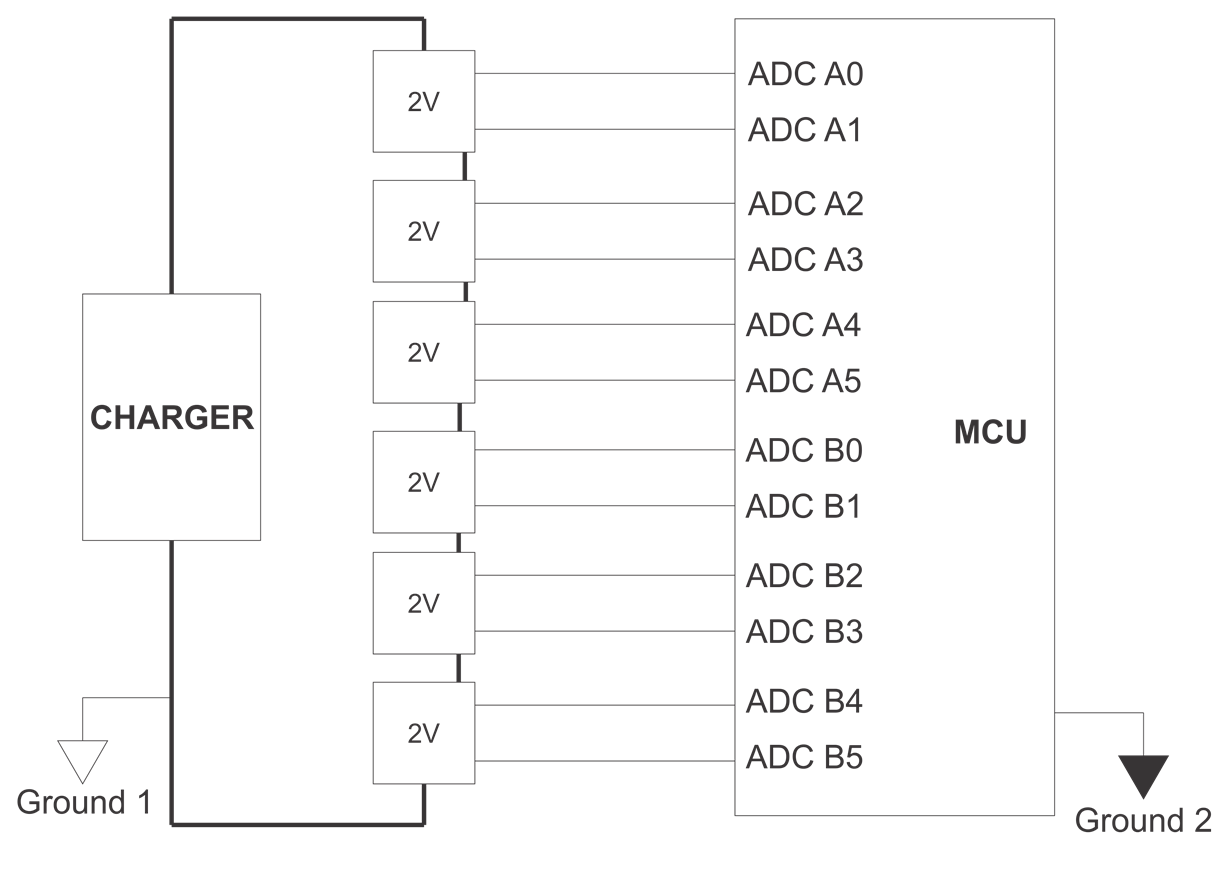I'm implementing a battery voltage monitoring system which uses the MCU ADC differential mode like the picture below. The batteries are connected in series and I'm quite sure that battery ground and MCU ground are isolated. The MCU is the F28377S from Texas Instrument, it's a 3.3V MCU, it has 16 single ended ADC channels that could be paired up into 8 differential channels.
With this configuration, I hope that there will be no ground connection between the charger and and the MCU. With the ground completely isolated, no common mode DC offset, the MCU will be able to handle a 12V battery pack since its ADC only tolerates up to 3V.




